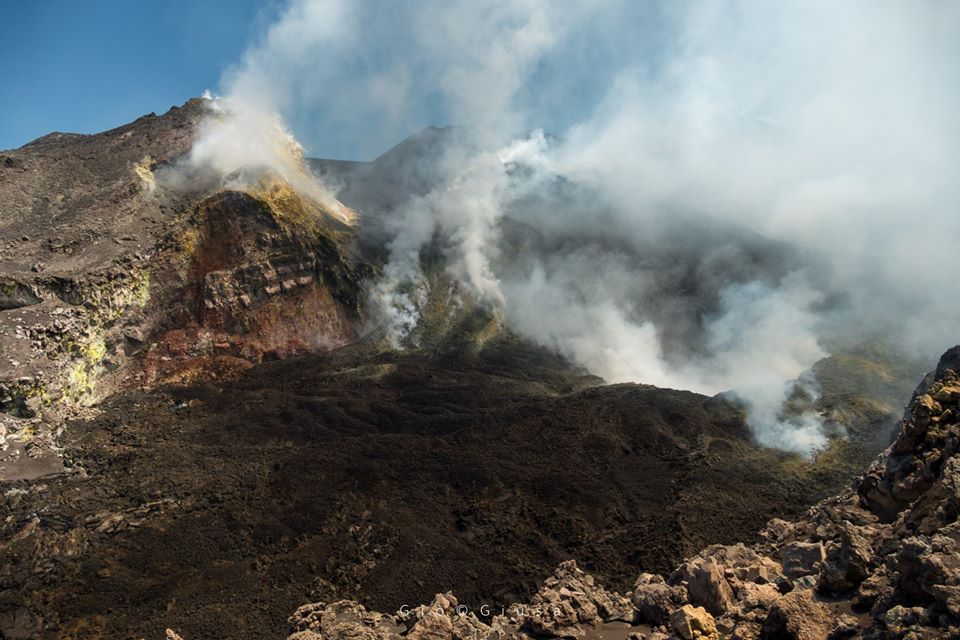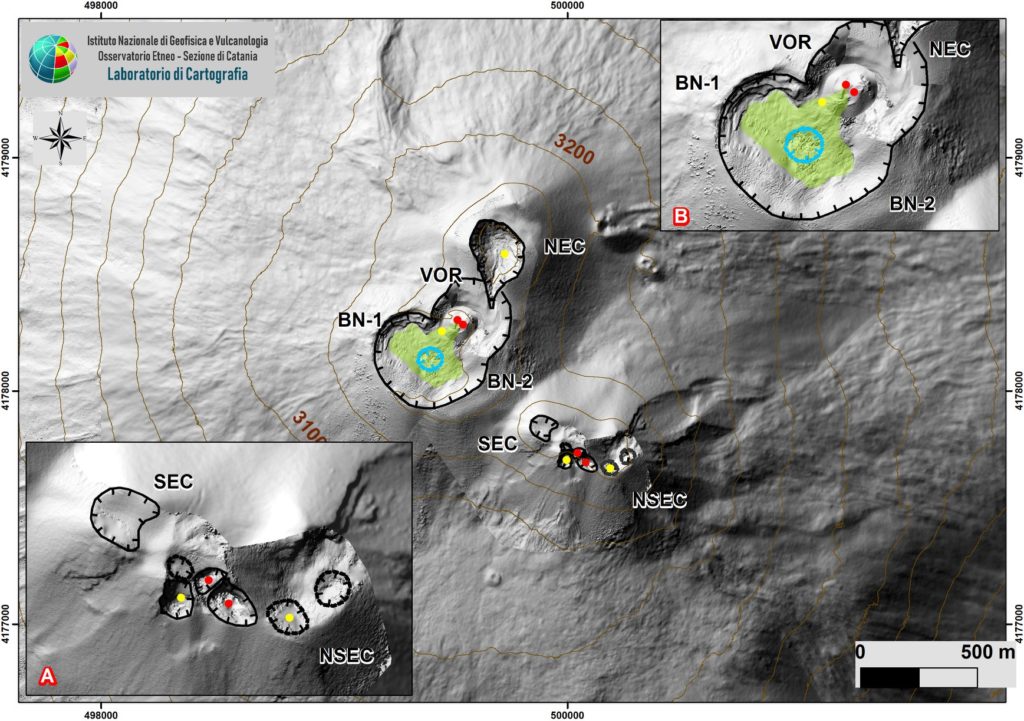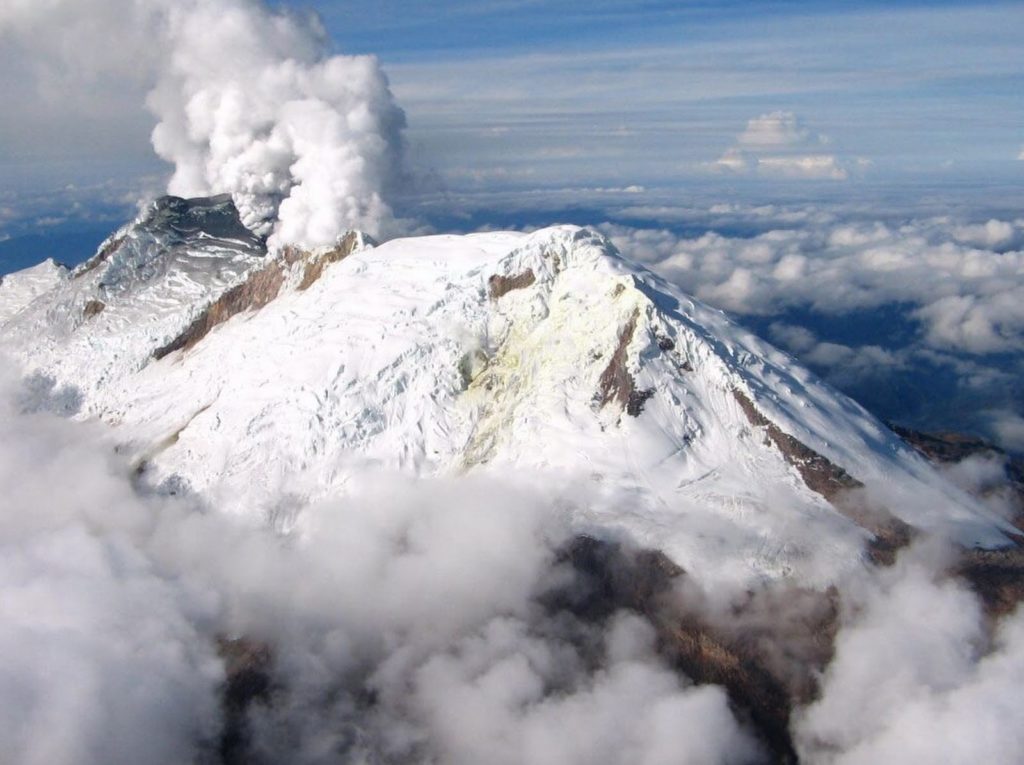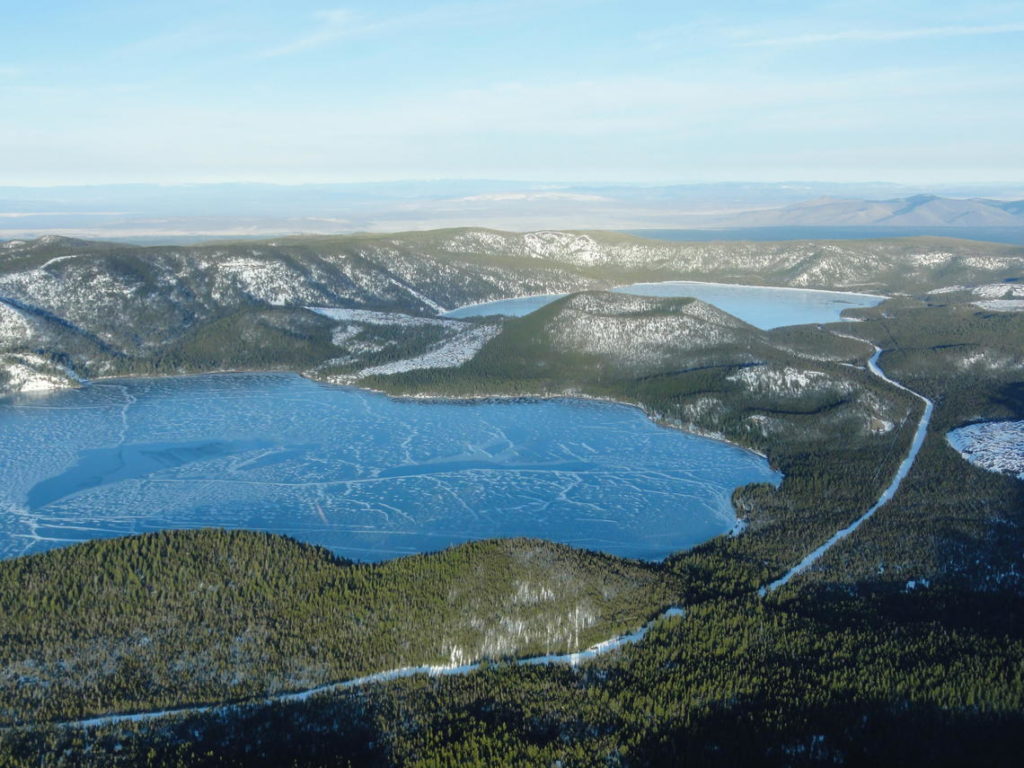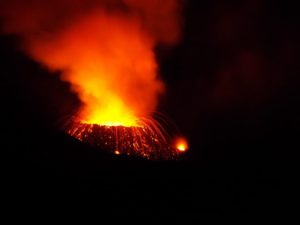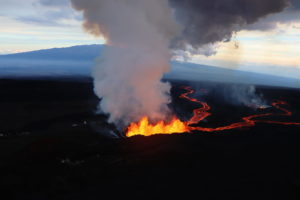August 05 , 2020.
Italy , Stromboli :
Weekly bulletin from July 27, 2020 to August 08, 2020.
(date of issue August 04 ,2020).
In the light of surveillance data, it is highlighted:
1) VOLCANOLOGICAL OBSERVATIONS: Normal explosive volcanic activity of Strombolian type on a low-medium-low level (3-7 events / h) and of intensity varying from low to medium in the area of the North crater and low in the Center South area.
2) SEISMOLOGY: The seismological parameters do not show significant variations.
4) DEFORMATIONS: The island’s soil deformation monitoring networks did not show significant variations over the period considered.
5) GEOCHEMISTRY: The flow of SO2 is at a medium-low level.
There are no updates on soil CO2 flow data.
There is no update of the CO2 / SO2 report because the station was destroyed during the explosion of July 19, 2020. The station is being restored.
The isotopic values of Helium from the last update (07/15/2020) are average values, in line with the previous ones.
6) SATELLITE OBSERVATIONS: The thermal activity in the summit area is at a moderate level.
VOLCANOLOGICAL OBSERVATIONS
In the period under observation, the eruptive activity of Stromboli was characterized by the analysis of the images recorded by the surveillance cameras of the INGV-OE located at altitude 190m, at Punta dei Corvi and at altitude 400m . The Pizzo camera was damaged during the event of July 19, 2020, the station is being restored in the INGV-OE laboratories. The description of the activity and the determination of the vents that feed the explosive activity in the North and Center-South zones could present uncertainties due to the framing of the cameras of altitude 400m and 190m which do not allow to determine the points of emission in particular for the CS zone.
The crater terrace seen by the thermal camera located on the Pizzo sopra la Fossa in an image of July 18 with the delimitation of the crater zones of the Center-South and North zone (respectively ZONE N, ZONE C-S). The abbreviations and arrows indicate the names and locations of the active vents on the date of the image. The area above the crater terrace is divided into three ranges of heights related to the intensity of the explosions.
In general, activity was at a medium-low level with a total daily average hourly frequency for the North and Center-South zone of between 3 and 7 events / h. The north crater area produced mainly low to medium intensity explosions, emitting coarse materials (lapilli and bombs) with radial fallout in the crater area and with poor distribution along the Sciara del Fuoco. While in the Center-South zone, the explosions mainly emitted fine materials with low intensity.
The amplitude of the volcanic tremor generally had medium-low values.
Source : INGV.
Italy / Sicily , Etna :
Weekly bulletin from July 27, 2020 to August 08, 2020.
(date of issue 04 August 2020).
SUMMARY OF ACTIVITY STATUS
In the light of surveillance data, it is highlighted:
1) VOLCANOLOGICAL OBSERVATIONS: Explosive activity of the Northeast crater, the Voragine Crater and the New Southeast Crater with discontinuous emission of volcanic ash and degassing activity
2) SEISMOLOGY: Low seismic activity, no fracturing event of M = 2 or higher. Amplitude of the tremor at average levels.
3) INFRASOUND: Low infrasound activity.
The crater of Bocca Nuova partially filled by lava from the effusive intra-crater activity of the neighboring Voragine (September 2019 – April 2020), Craters of the summit of Etna
4) DEFORMATIONS: The Etna soil deformation monitoring networks did not show any significant changes last week.
5) GEOCHEMISTRY: The flow of SO2 is at a medium-low level
HCl flow is at a medium-low level
Soil CO2 flux measurements (EtnaGas) showed no change from last week, focusing on average values.
The partial pressure of dissolved CO2 does not show significant variations. C / S values are average values (last measurement dated 07/17/2020)
Helium isotopic values confirm the downward trend (last update on 07/27/2020)
6) SATELLITE OBSERVATIONS: The thermal activity in the upper zone is at a medium-low level.
VOLCANOLOGICAL OBSERVATIONS
The monitoring of the volcanic activity of Etna during the week in question was carried out by analyzing the images provided by the surveillance cameras of the INGV, Osservatorio Etneo (INGV-OE), and through numerous observations of INGV – O staff. During the period under review. The activity of the summit craters of Etna was characterized by an intracrater Strombolian activity of the northeast crater (NE), by a sporadic Strombolian activity and low emissions of volcanic ash from the Voragine crater (VOR), a modest Strombolian activity and discontinuous ash emissions with the formation of a diluted volcanic cloud towards the New Southeast Crater (NSEC) and degassing activities by all the summit craters.
Etna summit area with zoom of the area relating to the SEC-NSEC system (A). Indented black lines indicate the edge of summit craters (BN: Bocca Nuova, with northwest (BN-1) and southeast (BN-2) depressions; VOR: Voragine; NEC: northeast crater; SEC : south-eastern crater and NSEC: new south-eastern crater The receding blue line indicates the depression inside the Bocca Nuova The yellow and red circles indicate the active degassing vents.
During the inspection on July 27, INGV-OE staff present in the summit area observed the presence of intracrater strombolian activity of varying intensity at the level of the northeast crater. Loud, discontinuous roars associated with this activity were reported in the following days. The Voragine crater was also characterized by sporadic Strombolian activity and produced slight emissions of volcanic ash which quickly dispersed into the atmosphere.
The New Southeast Crater was characterized throughout the week by Strombolian activity of varying intensity with product launches even above the crater rim and by a discontinuous emission of volcanic ash observed during the various inspections in the summit area carried out by INGV-OE personnel. This activity often produced a cloud of dilute volcanic ash that quickly dispersed into the atmosphere.
Close-up of the latest born of ′ ′ Mama ′ ′ Etna, the conetto formed inside the Voragine Crater (Central 1945) which gave a show with explosive and effusive activities between September 2019 and May 2020. Etna Summit Craters.
On July 31, an increase in explosive activity was clearly observed from ING-OE surveillance images with the formation of a volcanic cloud reaching a height of about 4.5 km above the level from the sea. On the afternoon of Sunday, August 2, INGV-OE staff also reported the presence of a negligible volcanic ash deposit in Trecastagni and Acicastello, combined with a possible slight increase in unobservable explosive activity. by INGV-OE surveillance cameras, also due to the cloud cover present at high altitude … / …
Volcanic tremor:
The amplitudes of the volcanic tremor remained at average levels. The springs were located in the area of the new southeastern crater at a depth close to the surface.
Source : INGV .
Photos : Gio Giusa .
Colombia , Nevado del Huila :
Weekly activity bulletin of the Nevado del Huila volcano.
The level of activity of the volcano continues at the level: Yellow activity level or (III): changes in the behavior of volcanic activity.
From the analysis and evaluation of the information obtained thanks to the monitoring network of the Nevado del Huila volcano during the week of July 28 to August 3, 2020, the COLOMBIAN GEOLOGICAL SERVICE – Volcanological and Seismological Observatory of Popayan informs that :
• During the period evaluated, 172 seismic events were recorded, of which 98 were related to rock fracture processes (type VT) and 74 to fluid dynamics in volcanic conduits. Of these, 70 were classified as long period type events (LP type), one (1) as hybrid type event (HB type) and three (3) as low energy tremor pulses (TR type).
• The images obtained during the week via the webcams of Caloto, Tafxnú, Maravillas and La Palma showed a weak degassing of the volcanic system.
• Sensors to monitor soil deformation, magnetic fields, and infrasound waves did not record variations associated with changes in volcanic activity.
Therefore, it is concluded that during the evaluated period, the volcano continued to show stable behavior.
The Colombian Geological Service continues to monitor the evolution of the volcanic phenomenon and will report in due course on any changes that may occur.
Source : SGC.
Photo : Parque Nacional.
United – States , Cascades Range Volcanoes :
Current Volcano Alert Level: NORMAL
Current Aviation Color Code: GREEN
Activity Update: All volcanoes in the Cascade Range of Oregon and Washington are at normal background levels of activity. These include Mount Baker, Glacier Peak, Mount Rainier, Mount St. Helens, and Mount Adams in Washington State; and Mount Hood, Mount Jefferson, Three Sisters, Newberry, and Crater Lake in Oregon.
Recent Observations: Earthquakes were located at Mount Hood over the last week, consistent with normal background seismicity. All other volcanoes are at background levels of seismicity. At Newberry volcano, starting on the July 4 weekend, several campers and US Forest Service (USFS) personnel have reported occasional strong sulfur smells in the East Lake and Cinder Hill campgrounds located on the east shore of East Lake inside the Newberry caldera. In response to these reports, USGS staff from the Cascades and California Volcano Observatories worked with USFS personnel to make gas measurements over the last week in areas of East Lake with known persistent gas features, as well as in the locations where sulfur smells were reported.
A view looking northeast across the central caldera of Newberry Volcano. Paulina Lake is in the foreground and East Lake is in the distance. The Central Pumice Cone lies between the two lakes. Near the bottom of the photo at the south edge of Paulina Lake, the two hills are named the Lakeshore Domes. The volcano is covered in snow and the lakes have ice on their surface.
Field crews found no unusual gas emissions. Field crews also noted that conditions were very dry inside the caldera and that lake levels were lower than they’ve been in many years, exposing several gas vents that are normally covered by lake water. Combined with the continued background levels of seismicity at Newberry, the field observations indicate that the sulfur smells are likely the result of localized, intermittent gas releases and are not due to larger changes in the Newberry magmatic system. The most likely explanation for the reported strong sulfur smells is that the current dry conditions and low lake levels in the caldera are allowing hydrogen sulfide and other gases to reach the surface without first being filtered by lake and/or ground-water. The USGS and USFS will continue to monitor conditions in the caldera.
The U.S. Geological Survey and Pacific Northwest Seismic Network (PNSN) continue to monitor these volcanoes closely and will issue additional updates and changes in alert level as warranted.
Source : CASCADES VOLCANO OBSERVATORY.
Photo : John Pallister. Public domain

